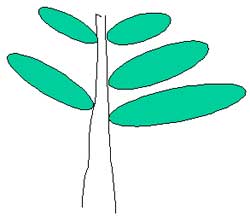Pine bark beetles, commonly called engraver or Ips beetles, are the most important insect pests associated with ice-damaged pine timber. Downed trees, trees that have had the trunk broken below the branches, and trees with fewer than three live branches remaining will probably be attacked and killed by pine engraver beetles. In addition, trees that are leaning more than 45° and trees that are severely bent or bowed are likely to be attacked. If possible, consideration should be given to salvaging timber in the above conditions. Trees suffering this type of damage may remain merchantable for as long as six months.
Another pine bark beetle, the black turpentine beetle, will also attack damaged and broken trees. This beetle is probably less of a concern than the engraver beetles.
The good news is that the dreaded southern pine beetle, the most destructive pine bark beetle in the southern United States, is not expected to be a factor in the bark beetle picture. The Texas Forest Service will be monitoring southern pine beetle populations across all of East Texas in the spring of 2001.
Landowners often develop concerns that pine bark beetle populations will reach epidemic proportions following a storm. This is not likely to happen. When the air temperature cools below 60°, bark beetle activity diminishes and there is little if any activity below 50°. As warmer temperatures arrive and the beetles become active, it is expected that there will be more damaged pine timber than the beetle population can attack or utilize. Much of the pine timber will spoil and be unsuitable for pine bark beetles. Pine engraver beetles and the black turpentine beetle have little interest in relatively healthy trees, even when beetle populations may be high.
As the name pine bark beetles implies, these insects do not attack hardwood trees.
Once a tree dies, it will be invaded by stain and decay fungi and insect borers. Therefore, rapid utilization of ice-damaged timber is encouraged.
Hardwood trees (oaks, gum, etc.) that have suffered limb breakage will probably survive and eventually recover. Yard trees should be properly pruned to promote rapid healing of wounds. Hardwood trees that were split or uprooted should be considered for salvage removal or for firewood.
Broken limbs and other major wounds on hardwood trees serve as an entry point for decay fungi. These decay fungi will cause wood to rot, but rarely will kill a tree. After several years, decay fungi may cause the tree to develop structural weakness and the tree could become a hazard, especially in an urban setting.
Homeowners should be reminded to contact their insurance agent concerning the loss of shade trees -- pines or hardwoods -- or property damage caused by fallen limbs or trees.
Typical Ice Damage to Pine Trees
Pine trees with at least 50% of the live branches remaining should survive and continue to grow. They will probably produce a merchantable tree. |
Trees with less than 50% of their live branches remaining should be considered for removal. If less than three or four live branches remain in the tree, it likely will die. If the bole is broken below the crown, the tree will die.
|
 |  |